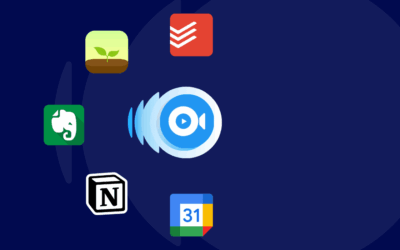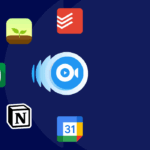AI in Everyday Life: 10 Smart Uses You Didn’t Know About

Artificial Intelligence (AI) has quietly become a part of our daily lives, often in ways we don’t even notice. While most people associate AI with futuristic robots or sci-fi movies, the reality is that AI already powers many of the tools and services we use every day. From the apps on our phones to the services that manage our homes, AI is working behind the scenes to make life easier, smarter, and more personalized. In this article, we explore 10 surprising and practical ways AI is being used in everyday life, with real-world examples that might just surprise you.
1. Smart Voice Assistants in the Home
Devices like Amazon Alexa, Google Assistant, and Apple Siri have become common in households around the world. These AI-powered voice assistants can play music, set alarms, control smart home devices, provide news updates, and even answer complex questions using natural language processing. AI enables these systems to learn user preferences over time, improving their accuracy and usefulness with each interaction.
2. Personalized Recommendations on Streaming Platforms
If you’ve ever noticed that Netflix or YouTube seems to know exactly what you want to watch, that’s AI at work. These platforms use machine learning algorithms to analyze your viewing history and suggest content that aligns with your tastes. The same technology is used by Spotify to create personalized playlists and by Amazon to recommend products you might like based on past purchases or searches.
3. AI-Powered Navigation and Traffic Updates
Google Maps and other GPS apps use AI to calculate the fastest routes by analyzing real-time traffic data. The system considers factors like road closures, accidents, and congestion, and automatically adjusts your route to avoid delays. AI also learns from historical traffic patterns to predict travel times more accurately, helping millions of commuters each day.
4. Facial Recognition for Security and Convenience
Many smartphones now use facial recognition to unlock devices, verify identities, or authorize transactions. This technology relies on AI to detect and map facial features in milliseconds. Facial recognition is also used in airports for automated boarding, security checks, and even in some cities for public safety and law enforcement, though it has sparked debates around privacy.
5. Email Filtering and Smart Replies
Email services like Gmail use AI to filter spam, categorize messages, and even suggest smart replies. These systems learn from your behavior and communication style to prioritize important emails and help you respond faster. Over time, AI can even predict which emails are most relevant and help reduce inbox clutter.
6. Smart Appliances That Learn Your Habits
Modern appliances like refrigerators, washing machines, and thermostats often include AI-based features. For example, smart thermostats like Nest learn your schedule and temperature preferences, automatically adjusting to save energy. AI-enabled refrigerators can track the contents inside and suggest recipes or shopping lists, making household management more efficient.
7. AI in Health Monitoring and Fitness Apps
Wearable devices like smartwatches use AI to track your heart rate, steps, sleep, and more. Apps like Fitbit or Apple Health analyze this data to provide personalized health insights and suggestions. Some AI tools can even detect irregular heartbeats, monitor stress levels, and recommend fitness routines based on your activity levels and goals.
8. AI in Customer Service Chatbots
Many businesses now use AI-powered chatbots to handle customer service inquiries. These bots can answer frequently asked questions, guide users through troubleshooting, and provide support 24/7 without human intervention. AI makes it possible for chatbots to understand and respond to customer messages using natural language processing, saving companies time and improving the customer experience.
9. Language Translation and Real-Time Communication
Apps like Google Translate and Microsoft Translator use AI to translate spoken or written text instantly. These tools are especially helpful for travelers or people communicating across different languages. Some advanced applications even allow real-time voice translation, bridging communication gaps and making cross-cultural interactions smoother.
10. AI in Online Shopping and Virtual Try-Ons
E-commerce websites are using AI to enhance the shopping experience in creative ways. From chatbots that help you find the perfect product to virtual try-on features that let you see how clothes or makeup will look on you, AI is making online shopping more interactive and convenient. Some platforms also use visual search powered by AI—just upload a photo, and the system will find similar products available online.
AI is no longer a futuristic concept—it’s already integrated into our lives in countless ways. Whether it’s helping you drive to work, suggesting a new movie to watch, or making your home smarter, AI is working silently in the background. As this technology continues to evolve, we can expect even more innovative and helpful uses in the near future. The key is to stay informed, understand how these tools work, and use them to make our daily routines simpler and more productive.
















